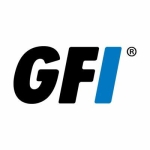What is our primary use case?
We use Check Point IPS to protect our infrastructure against threats. It internalizes different attack buttons. We started by deploying it only on the on-prem firewalls, but now we are also rolling out to the internal firewalls, the ones that segregate environments, the production, and the corporate environment.
How has it helped my organization?
Check Point has improved my organization by stopping almost 100% of the attacks we see. It also protects us from SQL injection and other injections. When people try to attack our websites, I see protection for that. I also see SSH over non-standard ports.
Some IPs in the United States try to attack our exposed websites. It is very important to protect our hosting infrastructure with our website for these kinds of attacks.
What is most valuable?
The most valuable feature is that it protects us against hundreds of different attack vectors, like ransomware. The protection is always being triggered. People try to access websites that are categorized as malware, so when the users do a DNS request for the IP of those malware websites, the IPS Blade replaces the real IP of the website that is malware with a bogus IP. The user gets an IP that doesn't exist and when he tries to access, it won't work. This is the protection that triggers the most on our infrastructure. For example, if a user tries to access malware.com, the DNS response gets changed by the IPS Blade to an IP that doesn't exist.
What needs improvement?
In my opinion, IPS is one of the better Check Point products because it's very easy to configure. You don't need to go protection by protection to check which ones you want to enable. You can enable the ones that are medium or higher severity and all those protections are immediately enabled.
When you deploy this on an existing firewall that is already working, it's always better to set it on detection mode before you put it on prevention mode. It's very easy to detect a profile and then check for a month if there are some false positives that you want to filter before you put it on prevention. It's very easy to work with.
The only thing they could maybe improve is that we notice right away that the performance decreases when we enable the IPS, especially beyond the CPU and memory usage. If you want to enable the IPS and you have a lot of traffic, it can have an impact. The performance could be improved.
Buyer's Guide
Check Point IPS
April 2025
Learn what your peers think about Check Point IPS. Get advice and tips from experienced pros sharing their opinions. Updated: April 2025.
848,716 professionals have used our research since 2012.
For how long have I used the solution?
We have been using Check Point IPS for four years.
What do I think about the stability of the solution?
It's very stable. We never had any issues of it stopping to work. It's been very stable.
What do I think about the scalability of the solution?
It's very scalable in the way that you can create a profile and a Blade throughout your firewalls. When you create an exception, it will apply to all your firewalls, if you want it to.
Three network security engineers work with Check Point IPS currently. It's used on all our permitted firewalls and most of the internal firewalls. We aim to deploy it on all our firewalls next year. It's deployed in 10 clusters.
How are customer service and support?
At one point, we had an issue where we had some firewall Blade logs that were empty. They didn't have any information and we didn't know why. We had some remote sessions, but we couldn't find the root cause. We gave up on it because we couldn't find a solution. Support could be better.
This issue sometimes happens on a daily basis but we started to ignore it because we had a lot of sessions and we couldn't find the problem. It doesn't impact service. It's just one log in each 1,000 or more.
Which solution did I use previously and why did I switch?
We also use Cisco Firepower. At first, we only had Cisco Firepower and then we started enabling IPS on the Check Point firewalls. At the moment, Check Point IPS is the only one that is in prevention mode. Cisco Firepower is only on detection. I think the biggest difference is that the advantage is that we already had the Check Point firewall. It was only a matter of enabling the new feature, the traffic was already going through it. We didn't need to add another appliance for doing the IPS on the Check Point port. Firepower has different hardware, so we need to do batching and put the traffic going through it. The biggest advantage of Check Point IPS is that it's integrated into a product that has other features. It's just a matter of enabling the Blade on the firewalls that are already receiving the traffic. I think it's the biggest use.
It's better to have everything in the same place. You can configure the firewall rules for allowing traffic and then you can also enable IPS protection on the traffic. It's better in that sense, but on the other hand, it will consume more resources on the firewall which is also doing other stuff.
Check Point has some advantages and some disadvantages when you compare it with Cisco Firepower. With the protection itself, both of them are very useful. We don't have complaints about Firepower. The idea is to compliment one product with the other. The idea is to have both vendors with different kinds of protections.
How was the initial setup?
My advice would be that if the firewall is already in place, you should also always put it in detection mode to see the report and see if you need to put any kind of exceptions before you put in prevention. You should also make sure that the hardware is capable of running the IPS for the amount of traffic that you want to analyze.
The initial deployment was very easy. You just need to buy the license, enable the Blade, and create a profile. It's easy when you create a profile because you just need to select which kind of protections you want to enable. You can select in terms of severity and performance impact. There are some protections that if you enable them, they have more impact than others. You can, for example, enable only the protections that have a medium or lower impact on the firewall performance and the medium or higher severity on the severity attacks. It's very intuitive and very quick to create the profiles.
The first deployment took three or four hours to add the license but then we waited for a month to create a new profile for the prevention mode. We deployed it ourselves.
What was our ROI?
Our return on investment is that we feel that our infrastructure is protected. Especially for our web hosting infrastructure, where we have our websites and our portals, which are always under attack.
What's my experience with pricing, setup cost, and licensing?
Compared to Firepower, the pricing for IPS is competitive. It's in line with Firepower and I think it's even a bit cheaper. Pricing is competitive.
Licensing is per-device. When we renew the firewall content, we buy the IPS license for each firewall where we want to deploy it.
What other advice do I have?
My advice would be to always have it with the latest database because you want to be protected against the latest attack vectors. It's very important to have it doing automatic updates so that when Check Point reviews an update of an attack that is currently happening, you always get it first before you get the effect.
I would rate Check Point IPS a nine out of ten. Not a ten because of the logging issues we've experienced.
Which deployment model are you using for this solution?
On-premises
Disclosure: PeerSpot contacted the reviewer to collect the review and to validate authenticity. The reviewer was referred by the vendor, but the review is not subject to editing or approval by the vendor.












